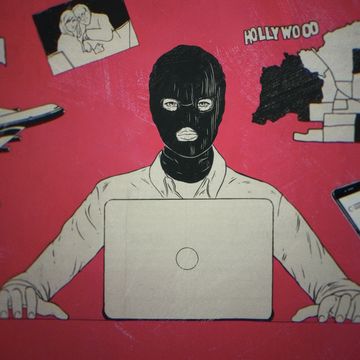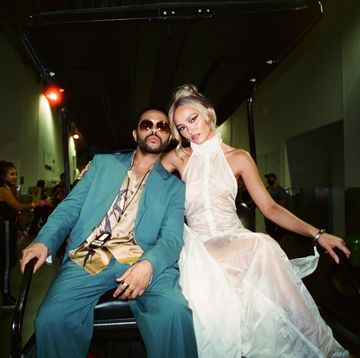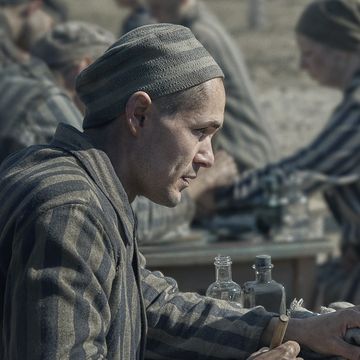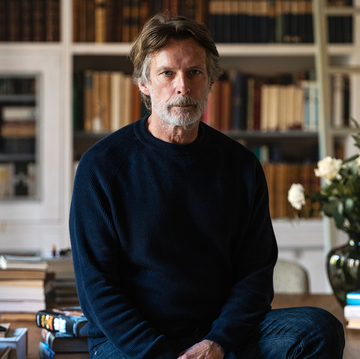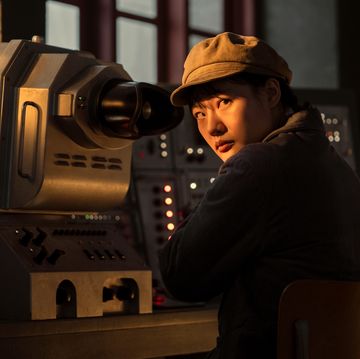By now, you've likely heard of the cult docu-series, Wild Wild Country, which premiered 16 March on Netflix. The series tells the story of controversial religious guru Baghwan Shree Rajneesh and the founding of the group's commune, Rajneeshpuram, in rural Oregon. While most documentaries add to the vague knowledge its viewer already has about a topic, Wild Wild Country has the strange privilege of introducing one of America's most infamously unknown—or at least forgotten—stories.
Beyond the strange clothing (maroon is a tough colour to pull off) and the particularly hazy religious tenets of the Rajneesh movement, the documentary paints a picture of the residents of Antelope and the Rajneeshee people—and then asks you to choose which side of the conflict to support. With every racist statement or act of violence, Wild Wild Country uses the shock value of its story more to reveal something about the person watching it rather than those who are seen on screen.
The story ultimately revolves around Ma Anand Sheela, who serves at the pleasure of Bhagwan as his assistant-turned-secretary. After Antelope residents want to do away with the cult-ranch, they take matters into their own hands and try to have them kicked off the land. Sheela does what any normal person would do: orchestrates a take over of City Council, changes the city’s name to Rajneeshpuram (which does not fit well on the Christmas card), switches out street names, buys some semi-automatic rifles, trains otherwise pacifistic people in how to use those rifles, buses in thousands of homeless people to sway a county-wide election, allegedly sedates them all when they lash out, and then engages in light bioterrorism to infect an entire town’s salad bar (the most sacred of buffet bars) with salmonella.
All of this is only three episodes into a six-part series, because Wild Wild Country is both a marathon and a sprint.
But inside the orbit of Sheela's manipulative and violent leadership is a sharp, often charming, woman. Her candour and quick wit make her uncomfortably sympathetic—so much so that I spent the latter part of the series considering her to be a righteous victim in comparison to her conservative counterparts. All the while, the people of Antelope are labeled xenophobic, which is an ironic claim considering a large number of the Rajneeshee people (also called sannyasins) were Americans who traveled to India to join the cult to begin with. In these complicated moments, it becomes the responsibility of the viewer to assign fault: What do you believe? Who do you favour?
Without spoiling the rest of the series, it's a bit bewildering how Wild Wild Country can be a totally different experience depending on who you are. What seems to string all of these people together is a need to believe in something. In times of uncertainty (the cult moved to Oregon in 1981, but it was really getting its roots as the Vietnam War came to an end), belief is what keeps people grounded. For the people of Antelope, it was this idea that an invasion of the Orange People (their words, not mine) would demolish everything they'd established for themselves. For the Rajneesh cult, it was the idea that Rajneeshpuram could infect the world with its good will one commune at a time—no matter the means of doing it.
But somewhere along my binge of the six-episode series, while lying on the floor (I honestly don’t even remember getting to the floor), I started questioning if Sheela, Queen of Getting Things Done Through Bioterrorism, wasn’t the monster she looked like on paper. Even at the end of the documentary, there was something that drew me toward this cult, even though there was mounting evidence that it drugged its own people, broke laws, and tried to murder someone in its own ranks.
But how much is influenced by your own perspective? It’s hard to tell. By design of our current society, you don’t want to be on the side of the Antelope people because some of them are seemingly narrow-minded folks who suggest “opening season” on the Rajneesh people, which is clearly bad. No one is arguing that! But at the very minimum, this whole Wild Wild Country storyline fixates on this Rajneesh brand of imperialism that sometimes borders on what looks like religious gentrification: There’s a new cult in town, and if you don’t like it, we’ll just take over. And if we can’t take it over, we’ll undermine the loopholes of the government to do it anyway.
The idea of supporting this cult that carries the promise of good ideals while exacting bad behaviour is a problem itself. But in pursuit of assigning roles of Good Guy and Bad Guy, it's easy to decline any sympathy for the 40-ish people of Antelope who had their lives turned upside-down because they lived next to the convenient spot to build a commune. In some circles, we’d call it a type of gentrification. Because we don’t like who it’s happening to, we call them bigots who had it coming.
That’s the complicated part of Wild Wild Country: It presents you with all of the facts and the characters, many of whom are still alive and participate in interviews, including Sheela. You know what these people have done. You know how it turns out and how climatically anticlimactic the finale is. And then you’re left to choose which matters more to you: xenophobia or imperialism? Devotion to religion or devotion to country? And when you’re lying on the floor and three boxes of Samoas are empty and the credits are rolling, you’re thinking, “Am I maybe racist for feeling the way I do?” And then you go to bed because this is a television show and it’s 3:00 am.
If nothing else, Wild Wild Country is worth the watch because it sheds a beam of light on a very strange corner of recent American history that would otherwise become a blip on the radar. But after its all said and done, it also has the ability to reveal something about the viewer. Toward the end of the series, Rajneeshpuram’s last mayor, Swami Prem Niren (or Philip) talks about another mystic named Gurdgieff who spoke about vices. Those vices would put humans in uncomfortable physical or mental places in order to reveal something deeper about who they were as a human. He suggested that maybe Rajneeshpuram was simply a test for him and Sheela and Bhagwan and America as a whole, to see what they do when placed under pressure.
That may be the most valuable part of Wild Wild Country for us, too. What does a documentary about a sex cult gone too far say about you?
Justin Kirkland is a Brooklyn-based writer who covers culture, food, and the South. Along with Esquire, his work has appeared in NYLON, Vulture, and USA Today.



